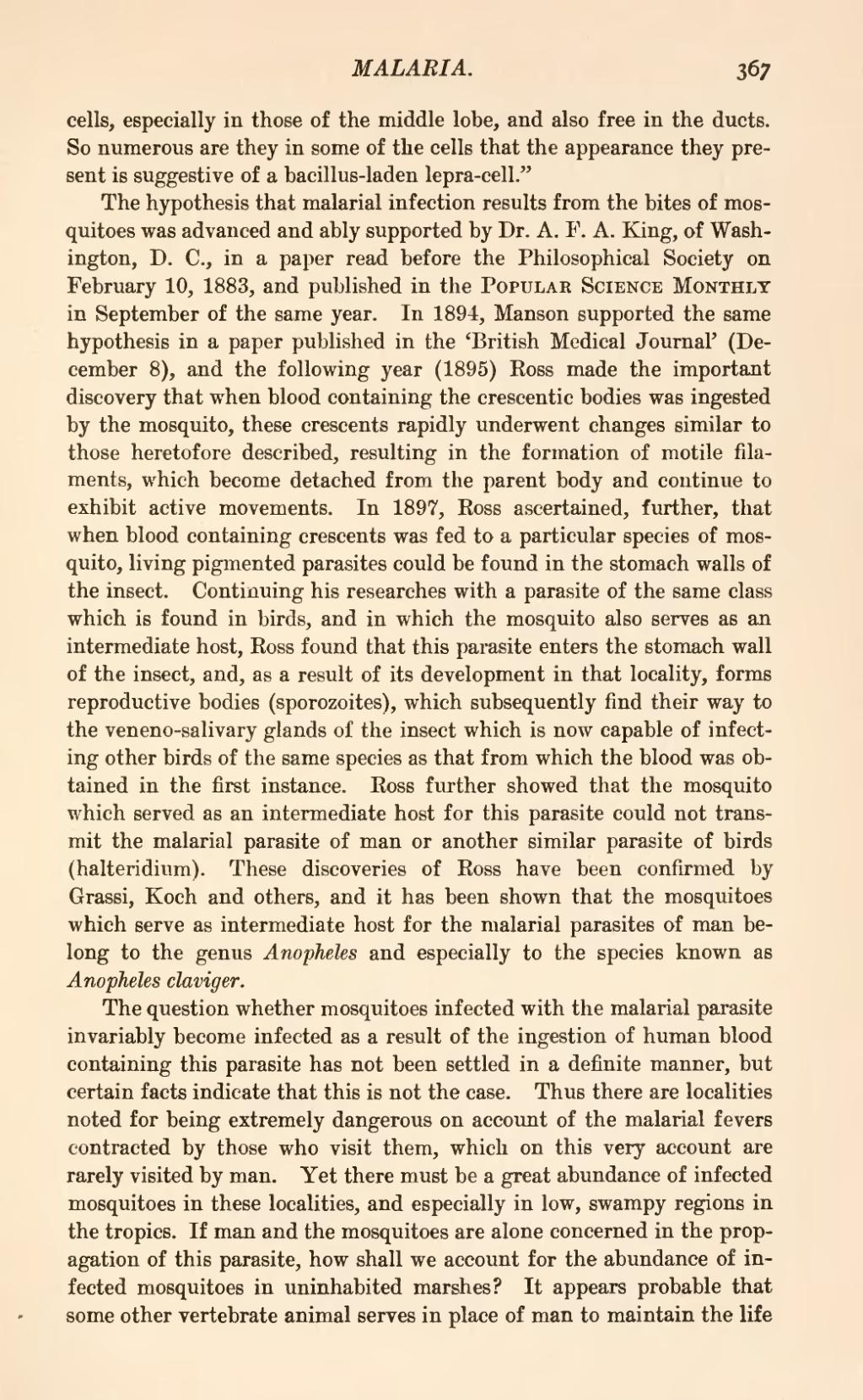cells, especially in those of the middle lobe, and also free in the ducts. So numerous are they in some of the cells that the appearance they present is suggestive of a bacillus-laden lepra-cell."
The hypothesis that malarial infection results from the bites of mosquitoes was advanced and ably supported by Dr. A. F. A. King, of Washington, D. C, in a paper read before the Philosophical Society on February 10, 1883, and published in the Popular Science Monthly in September of the same year. In 1894, Manson supported the same hypothesis in a paper published in the 'British Medical Journal' (December 8), and the following year (1895) Ross made the important discovery that when blood containing the crescentic bodies was ingested by the mosquito, these crescents rapidly underwent changes similar to those heretofore described, resulting in the formation of motile filaments, which become detached from the parent body and continue to exhibit active movements. In 1897, Ross ascertained, further, that when blood containing crescents was fed to a particular species of mosquito, living pigmented parasites could be found in the stomach walls of the insect. Continuing his researches with a parasite of the same class which is found in birds, and in which the mosquito also serves as an intermediate host, Ross found that this parasite enters the stomach wall of the insect, and, as a result of its development in that locality, forms reproductive bodies (sporozoites), which subsequently find their way to the veneno-salivary glands of the insect which is now capable of infecting other birds of the same species as that from which the blood was obtained in the first instance. Ross further showed that the mosquito which served as an intermediate host for this parasite could not transmit the malarial parasite of man or another similar parasite of birds (halteridium). These discoveries of Ross have been confirmed by Grassi, Koch and others, and it has been shown that the mosquitoes which serve as intermediate host for the malarial parasites of man belong to the genus Anopheles and especially to the species known as Anopheles claviger.
The question whether mosquitoes infected with the malarial parasite invariably become infected as a result of the ingestion of human blood containing this parasite has not been settled in a definite manner, but certain facts indicate that this is not the case. Thus there are localities noted for being extremely dangerous on account of the malarial fevers contracted by those who visit them, which on this very account are rarely visited by man. Yet there must be a great abundance of infected mosquitoes in these localities, and especially in low, swampy regions in the tropics. If man and the mosquitoes are alone concerned in the propagation of this parasite, how shall we account for the abundance of infected mosquitoes in uninhabited marshes? It appears probable that some other vertebrate animal serves in place of man to maintain the life
